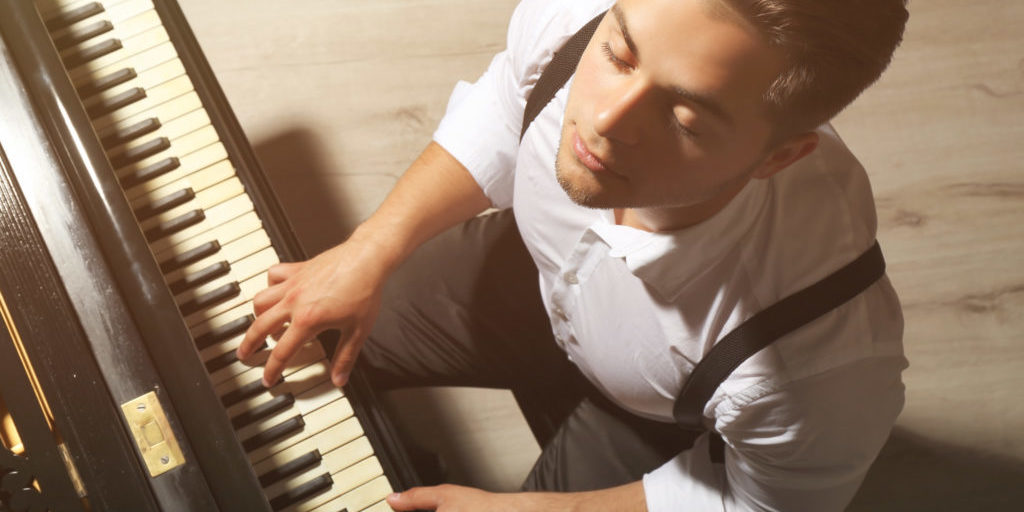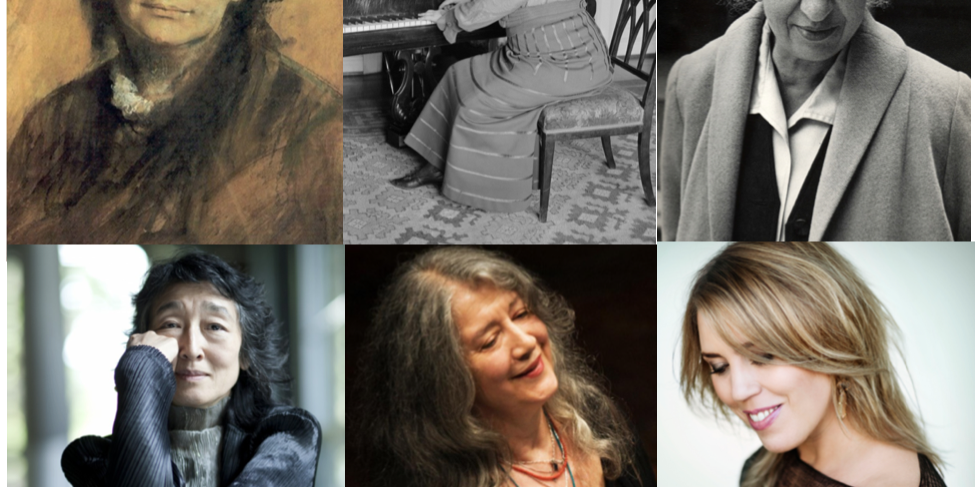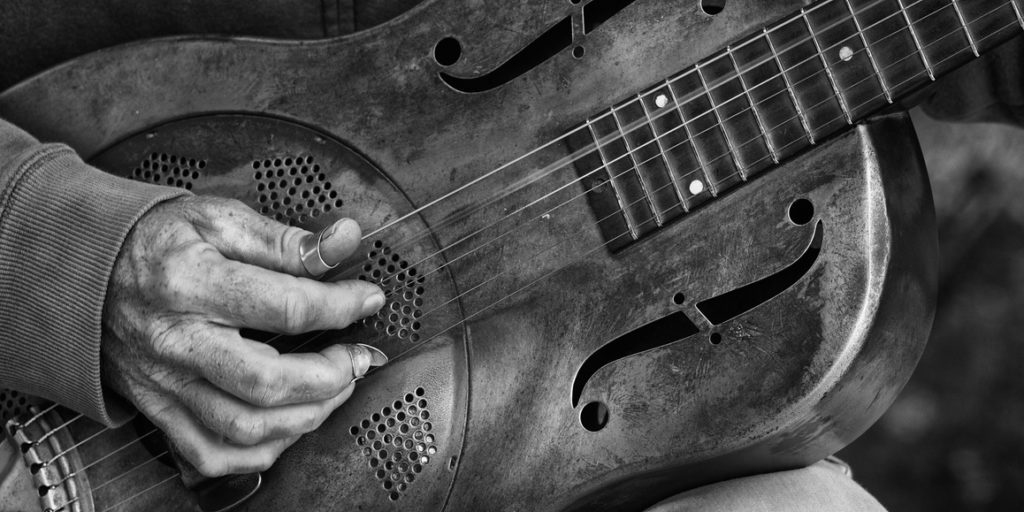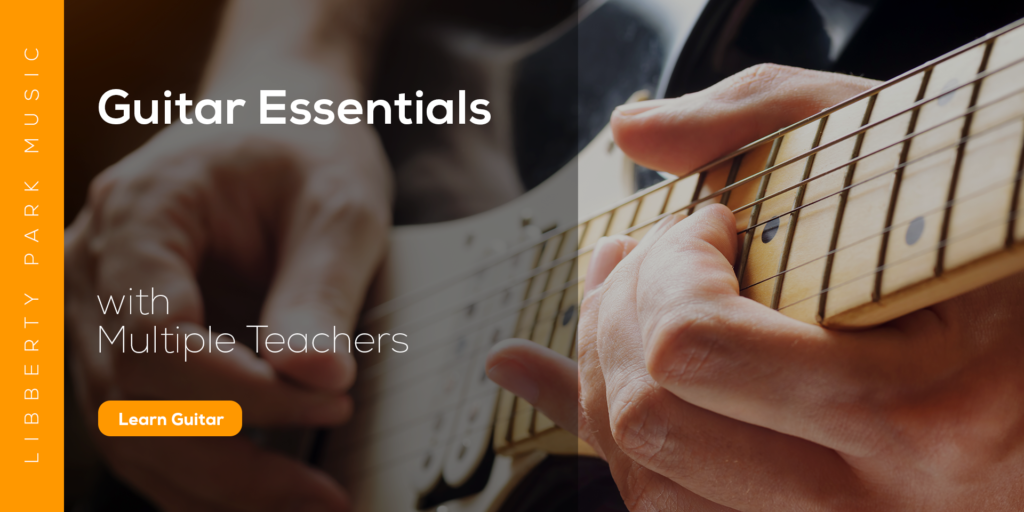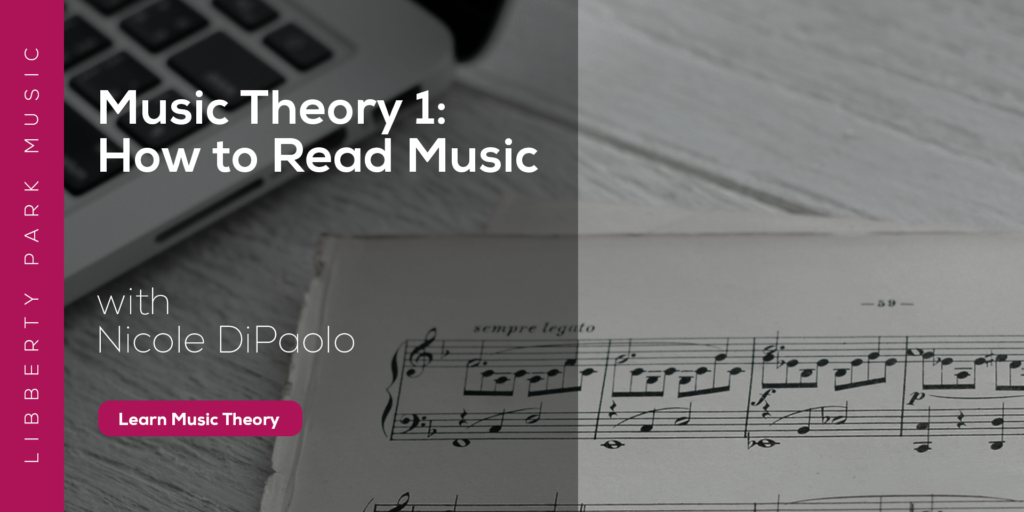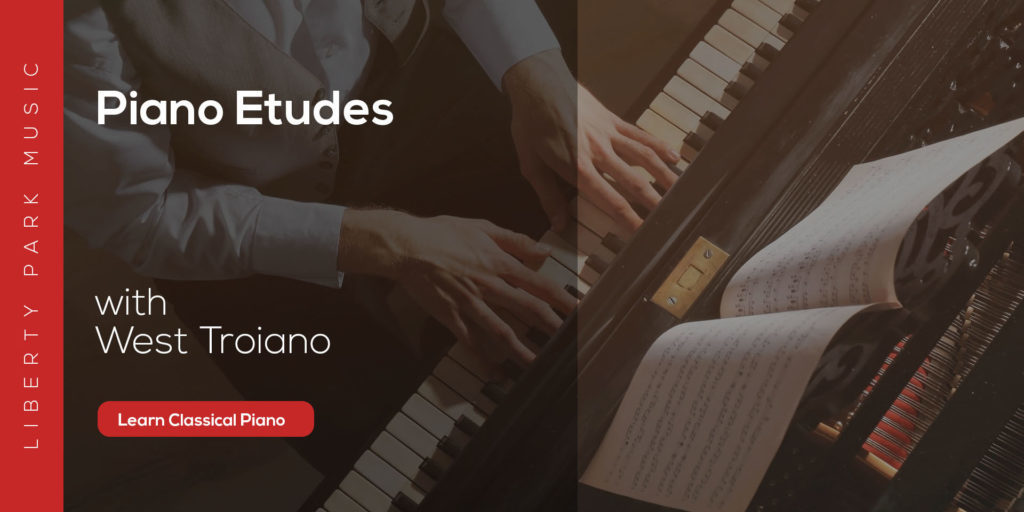
The Baroque Period of Western music history saw the development of many of the instruments and performing techniques we still use today. In modern times, budding musicians study the compositional techniques codified during the Baroque period. Much of the music from this era is standard in the modern classical repertoire.
During the Baroque period, compositions became more complicated, ensemble sizes increased, and the influence of Italian opera brought new drama throughout the European musical world. In addition, composers during this time generally enjoyed the benefits of increased arts patronage, as well as the growing acceptance of non-sacred instrumental music, which fueled innovation and experimentation.
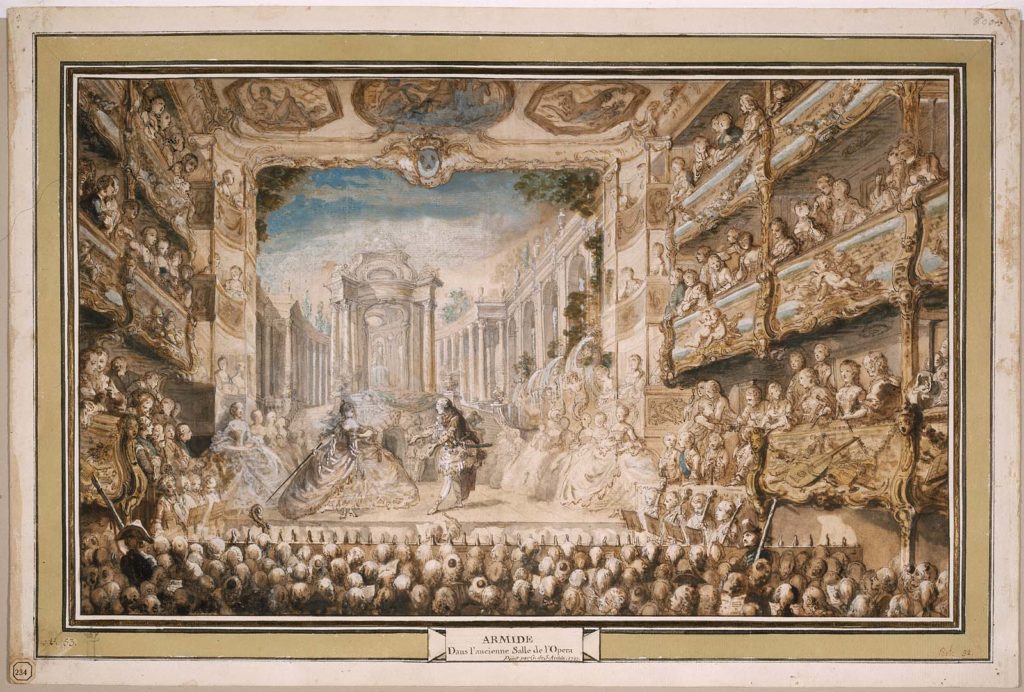
The word “Baroque” is taken from the Portuguese word barroco, a pearl of irregular shape that was used in fine jewelry, and was considered a pejorative when it was first used in the early 18th century. The term bears association with the extravagant works of art and architecture that were prevalent during this time, exemplified by creations such as the Palace of Versailles in France, or the elaborate sacred art within St. Peter’s Basilica in Vatican City.
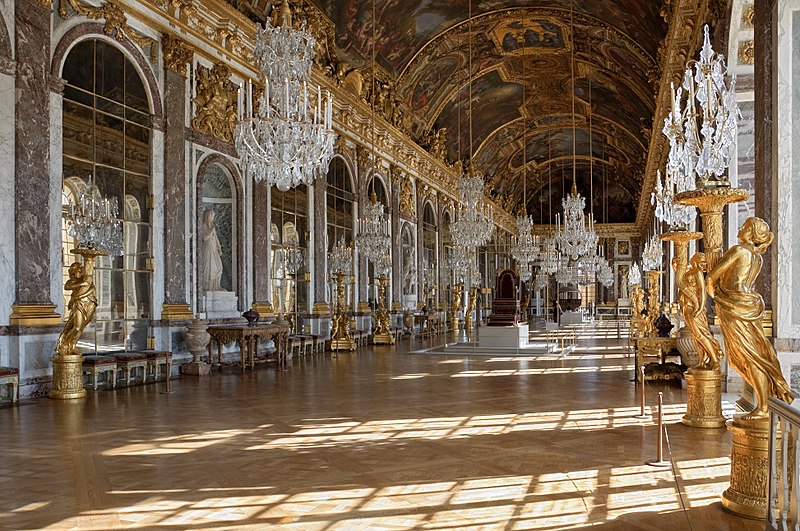
Musical Traits of the Baroque
While there is a great deal of diversity in compositional style to be found during this period, a few key elements can be pointed to as being idiomatically Baroque:
Counterpoint
The technique of counterpoint carried over from the vocal polyphonic practices of the Renaissance era and reached some of its greatest heights under the quills of the Baroque composer. In contrapuntal compositions, multiple lines of musical material (melodies) are woven together as independent and equally important “voices.” Check out this example, from Johann Sebastian Bach’s Prelude and Fugue in C-sharp minor, BWV 848.
Basso Continuo and Monody
The development of a basso continuo (or “continuous bass”) to provide a regular, reliable foundation over which both harmony and melody could interact became a prevailing compositional device in the Baroque period. This was due in part to the growing acceptance of secular instrumental music, and the increasing influence of Italian opera. The musical shorthand of figured bass, which uses small numbers under a bass note to indicate the harmonic intervals to be played above it, was developed in conjunction with basso continuo. The use of basso continuo in Italian madrigals and opera lead to the musical texture of monody wherein the melodic line becomes more important, unlike in counterpoint where all the “voices” are equally important.
One of the more beautiful examples of this can be found in the aria, "When I am laid in Earth," from Henry Purcell's 17th century opera, Dido and Aeneas. Check it out here.
Ornamentation
Performers and composers of the Baroque period also often decorated their melodies with heavy ornamentation, which could be anything from simple trills or turns, to complicated arpeggios or scale figures.
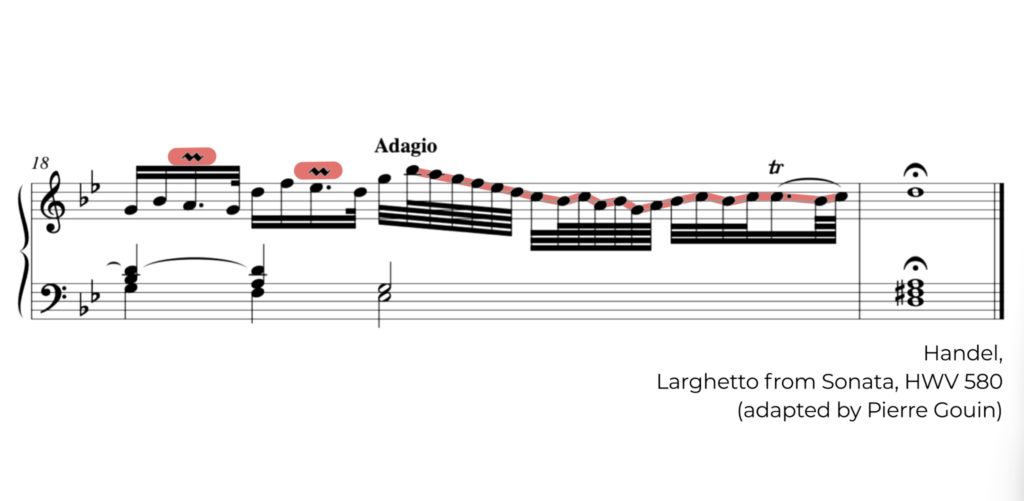
Virtuosic Performers
Along with the aforementioned developments of counterpoint, basso continuo, and ornamentation, the Baroque also saw a rise in virtuosic performers. The skills of musicians evolved with the technical demand leading to greater professionalization and virtuosity, and more technically challenging compositions. Performers demonstrated their abilities through technical feats, such as improvising fugal counterpoint or long ornamented vocal lines. In fact, composers like Johann Sebastian Bach (and later composers like Mozart and Beethoven), frequently participated in competitions to see which composer-performer could improvise the best counterpoint on the spot.
Harmony and the Birth of Tonality
Composers during the Baroque also came to codify major and minor modalities, which would govern the harmonic prerogatives of composers well into the 19th century. Jean Philippe Rameau’s Treatise on Harmony in 1722 incorporated mathematics to argue for a harmonic gravity, whereby a “fundamental bass” served as the musical base from which all harmonic movement originated and had to return to by the end of a piece.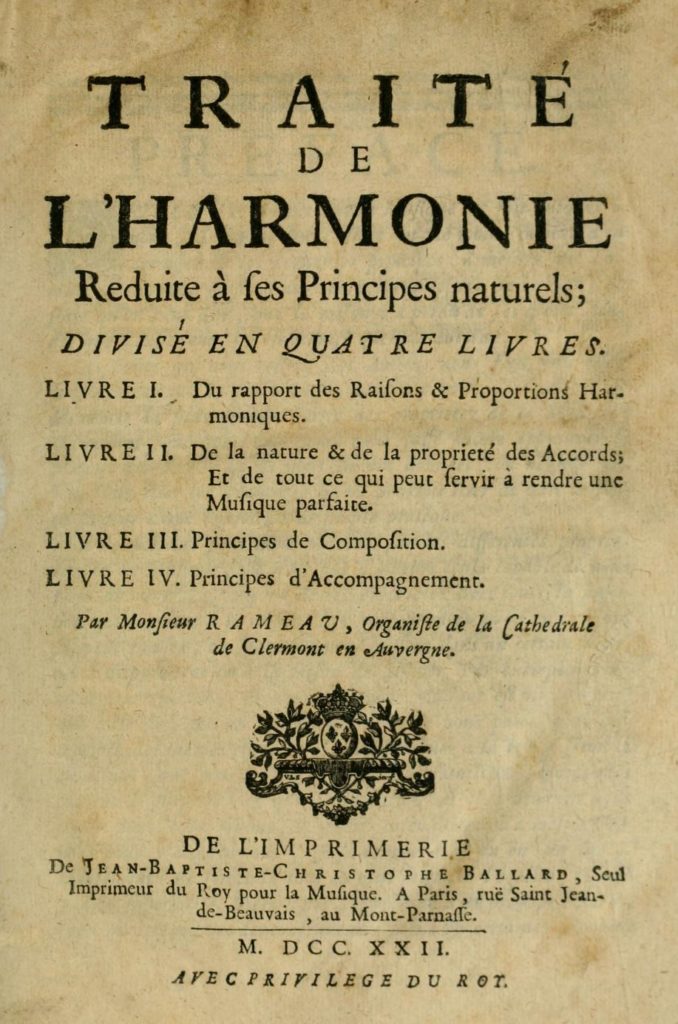
Rameau coined the terms “tonic,” “dominant,” and “subdominant” to represent the I, V, and IV chords of a key, and the goal of harmonic progressions to lead back to I. Much of Baroque music, while using some of the tonal practices laid out in Rameau’s Treatise would still be considered modal rather than tonal, and the core principles of tonality as we know it became much more prominent during the Classical era.
Instruments
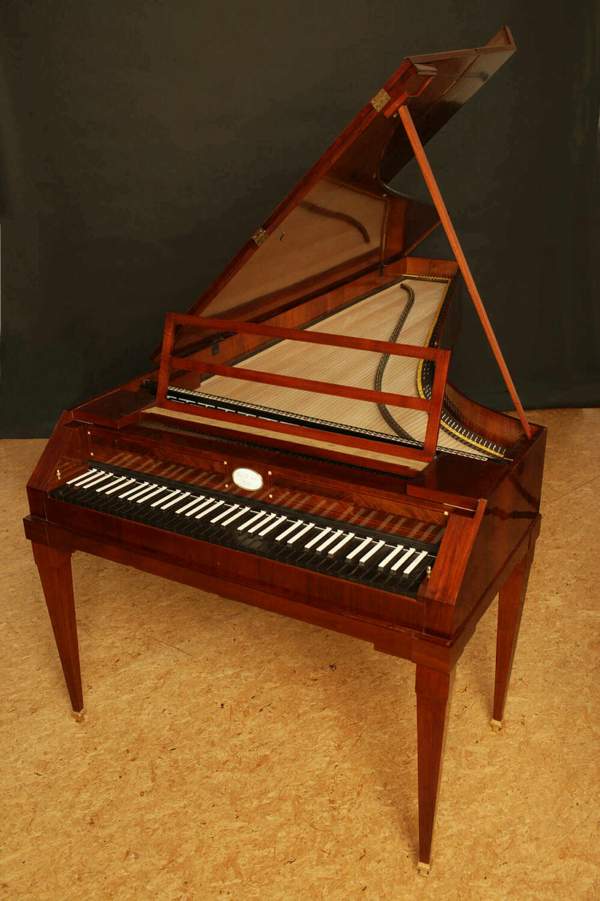
Additionally, many instruments that would become staples of the modern classical orchestra either matured or were invented during this period. For example, the legendary Cremonese violin maker Antonio Stradivari (c1644–1737) established new standards for the construction and quality of violins throughout the early decades of the 18th century that are still in practice today.
Meanwhile, Venetian instrument builder Bartolomeo Cristofori (1655–1731) invented the instrument referred to in its earliest phases as the “fortepiano” or “pianoforte,” which would later be shortened to simply: the piano.
Baroque Composers
Many of the leading musical figures during the Baroque were pioneers of form and style:
Italian composer Alessandro Scarlatti (1660–1725) helped to develop and popularize many aspects of operatic form and design, greatly influencing opera composers for generations to come.
Virtuoso keyboard performer and composer Johann Froberger (1616–1667) established the well-known, four-movement Baroque dance suite as a standard genre for keyboard music.
Antonio Vivaldi (1678–1741), a fantastically prolific composer who is most often remembered by modern day listeners for his series of violin concertos known as the Four Seasons, spent much of his career setting the bar for the composition and performance of instrumental concertos. But the most prominent names to emerge from the annals of Baroque music history are undoubtedly those of George Frideric Handel (1685–1759) and Johann Sebastian Bach (1685–1750), both whom left vast bodies of work that continue to inspire, amaze, and instruct music lovers the world over.
Check out this list of major Baroque composers to learn more:
Johann Sebastian Bach (1685–1750), Dieterich Buxtehude (1637–1707), Francesca Caccini (1587–1640), Giulio Caccini (1551–1618), Giacomoa Carissimi (1605–1674), Francesco Cavalli (1602–1676), Arcangelo Corelli (1653–1706), François Couperin (1668–1733), Girolamo Frescobaldi (1583–1643), Johann Jakob Froberger (1616–1667),George Frideric Handel (1685–1759), Jean-Baptiste Lully (1632–1687), Claudio Monteverdi (1567–1643), Johann Pachelbel (1653–1706), Henry Purcell (1659–1695), Johann Joachim Quantz (1697–1773), Jean-Philippe Rameau (1683–1764), Alessandro Scarlatti (1660–1725), Domenico Scarlatti (1685–1757), Heinrich Schütz (1585–1672), Barbara Strozzi (1619–1677), Georg Phillip Telemann (1681–1767), and Antonio Vivaldi (1678–1741).
Of course, listening to musical examples is the best way to truly learn about a musical style, so here are some musical examples from the Baroque period for you to enjoy:
Musical Examples from this Period
- Purcell: “Dido’s Lament” from Dido and Aeneas
- Pachelbel: Hexachordum Apollinis
- Vivaldi: Violin Concerto in A Minor, RV356
- Couperin: Allemande, l'art de Toucher le Clavecin (The Art of Harpsichord Playing)
- Telemann: Sonata for Bassoon in F Minor, TWV 41F1
- Handel: Sarabande in D Minor
- Handel: Keyboard Suite No. 5 in E Major, HWV 430
- Bach: Cantata: Meine Seel erhebt den Herren, BWV 10
- Bach: Brandenburg Concerto No. 5 in D Major, BWV 1050
- Bach: C# Major Prelude and Fugue, WTC Book 1, BWV 848
- Bach: Violin Partita No. 1 in B Minor, BWV 1002
Thanks for reading! Keep an eye out for more articles on music history, and for our Composer Bios article series, where we will survey the lives and music of your favorite classical composers.

